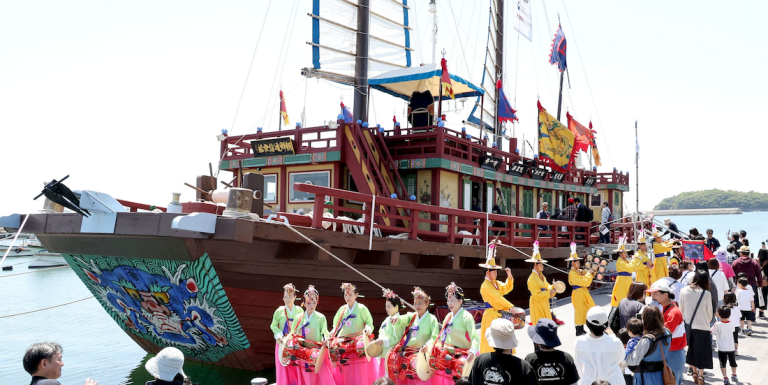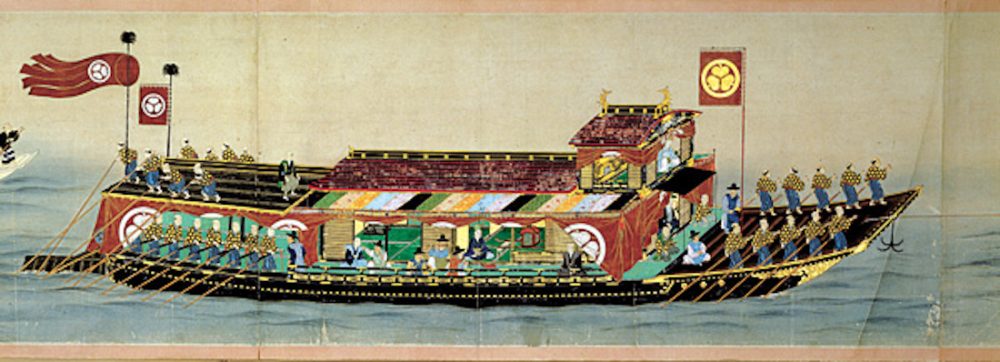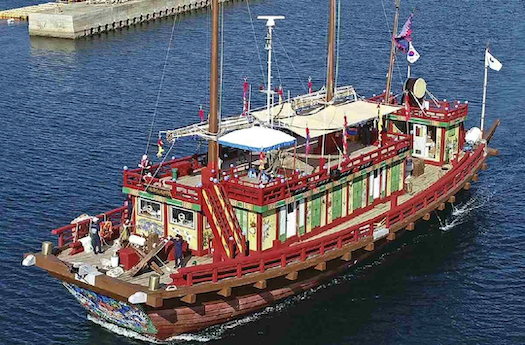
Traditional Wooden Vessel Recreates Ancient Cultural Exchange Mission Between Peninsula And Island Nation
New York, N.Y. – A meticulously crafted replica of a traditional Korean diplomatic vessel has completed a historic voyage to Japan, recreating ancient maritime exchanges that once fostered centuries of cultural and intellectual dialogue between the two nations.
The wooden sailing ship, built using traditional techniques, represents a powerful symbol of diplomatic cooperation and shared heritage across the East China Sea.

Ancient Maritime Diplomacy Comes Alive
The replica vessel draws inspiration from the Joseon Dynasty-era ships that regularly traversed the waters between the Korean Peninsula and Japan from the 15th through 19th centuries. These diplomatic missions, known as Tongsinsa in Korean, served as crucial channels for political negotiation, scholarly exchange, and cultural enrichment between the neighboring nations.
Historical records indicate that these voyages carried diplomats, scholars, artists, and craftsmen who shared knowledge in fields ranging from Confucian philosophy to advanced printing techniques. The ships themselves represented masterpieces of Korean naval architecture, featuring sophisticated hull designs optimized for both coastal navigation and open-sea voyages.
The modern recreation project involved years of research into traditional shipbuilding methods, with craftsmen studying archaeological evidence and historical documents to ensure authenticity. Maritime historians and naval architects collaborated to recreate the vessel’s distinctive features, including its reinforced wooden hull and traditional rigging system.
Cultural Bridge Across Historical Waters

The contemporary voyage serves multiple purposes beyond historical recreation. Educational institutions from both countries have partnered to develop exchange programs that mirror the intellectual curiosity of their predecessors.
Students and researchers aboard the replica ship are documenting traditional navigation techniques and studying the cultural significance of these historic trade routes.
“This journey represents more than just a sailing expedition,” explained a cultural historian involved in the project. “It demonstrates how shared maritime heritage can serve as a foundation for contemporary cooperation and understanding.”
The ship’s crew includes both Korean and Japanese participants, reflecting the collaborative spirit that characterized the original diplomatic missions. Modern safety equipment ensures the voyage meets current maritime safety standards while preserving the authentic sailing experience.
Modern Technology Meets Ancient Wisdom
While maintaining historical accuracy in construction and operation, the replica incorporates discrete modern technologies for safety and documentation purposes. GPS systems and emergency communication equipment operate alongside traditional navigation instruments, creating a unique blend of past and present.
The voyage has been extensively documented through digital media, with historians and cultural anthropologists creating comprehensive records of the experience. This documentation will serve educational institutions and researchers studying East Asian maritime history and diplomatic traditions.
Environmental considerations have also played a significant role in the project’s planning. The ship’s route follows traditional pathways while accounting for modern shipping lanes and marine conservation areas. This approach demonstrates how historical recreation can coexist with contemporary environmental stewardship.
Educational Impact and Future Initiatives
The successful completion of this voyage has sparked interest in expanding cultural exchange programs between Korea and Japan. Educational institutions are exploring opportunities to incorporate maritime history and traditional navigation into their curricula, fostering greater appreciation for shared regional heritage.
Universities in both countries are developing joint research initiatives focused on East Asian diplomatic history and traditional shipbuilding techniques. These academic partnerships aim to preserve valuable knowledge while training new generations of scholars in specialized fields.
The replica ship will continue serving as an educational platform, with plans for additional voyages and public exhibitions. Museums and cultural centers are coordinating to display artifacts and documentation from the journey, making this historical recreation accessible to broader audiences.
Future initiatives may include training programs for traditional navigation techniques and wooden shipbuilding methods, ensuring these valuable skills remain available for future generations. The project demonstrates how historical recreation can serve as a catalyst for ongoing cultural cooperation and educational innovation.
Historic Korean Replica Diplomatic Ship Sails Again To Japan (June 21, 2025)
#KoreanShipJapan #CulturalExchange #MaritimeHistory #DiplomaticHeritage
#EastAsia #TraditionalShips #KoreaJapanRelations #HistoricalRecreation
TAGS: maritime history, cultural diplomacy, Korea, Japan, traditional ships, Joseon Dynasty,
Tongsinsa, East Asian relations, naval architecture, educational exchange
75-Word Audio Summary
A replica of a traditional Korean diplomatic ship has sailed to Japan, recreating historic cultural exchanges between the two nations. The wooden vessel, built using ancient techniques, symbolizes centuries of shared maritime heritage and diplomatic cooperation. This journey highlights the importance of cultural diplomacy and educational exchange in modern East Asian relations, demonstrating how historical connections can bridge contemporary political divides.